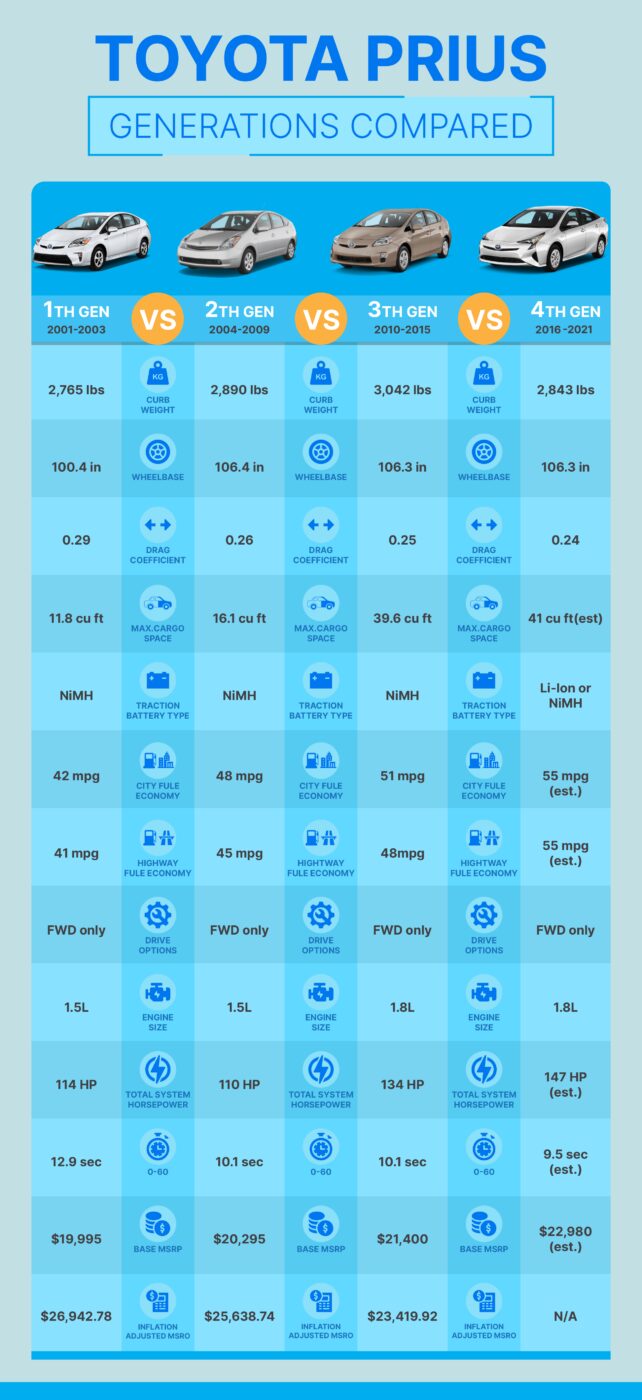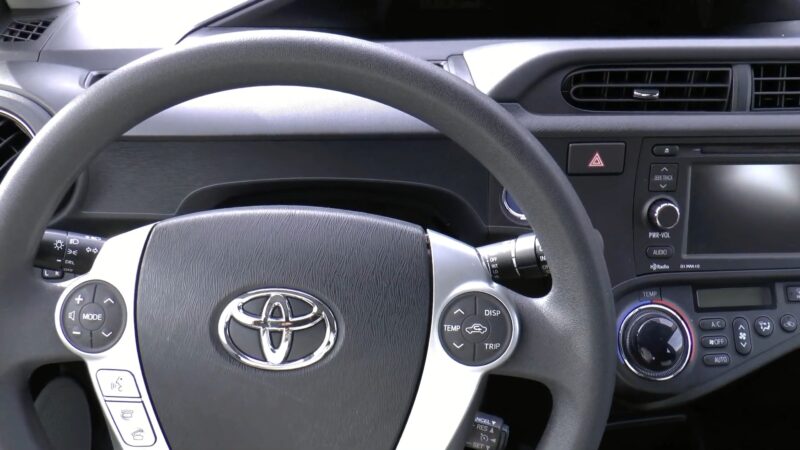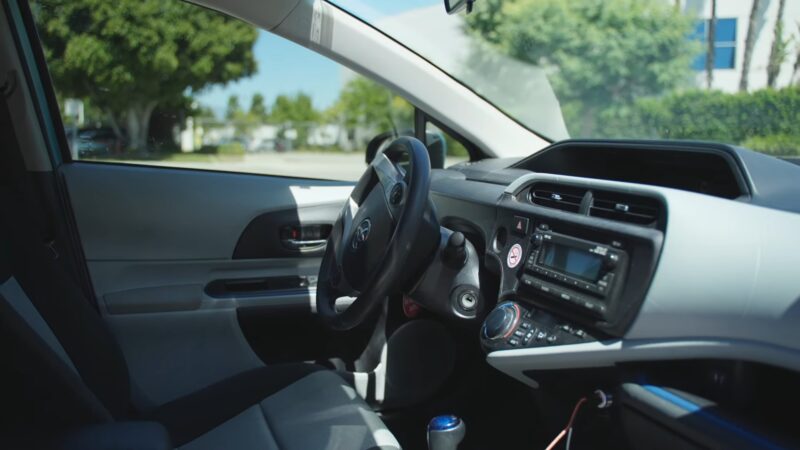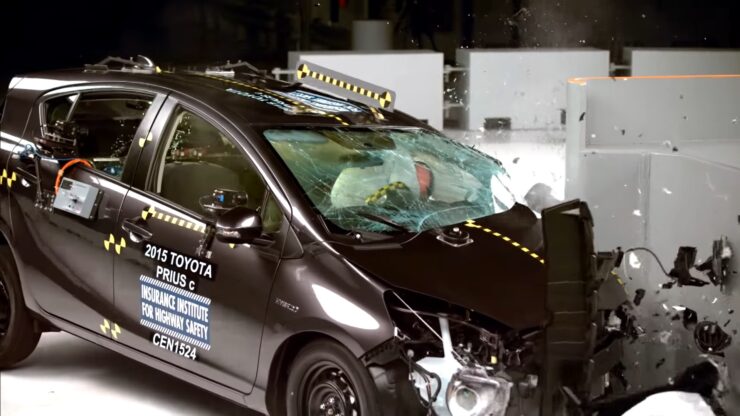
Share Post:
The Toyota Prius C was Toyota’s smallest and most affordable hybrid offering before it was discontinued in 2019. Known for its exceptional fuel efficiency and urban-friendly design, the Prius C offered several trims—One, Two, Three, and Four—each providing a different level of features and comforts while maintaining the same underlying hybrid technology.
When considering the Toyota Prius C, it’s crucial to understand the differences between its trims. Each version comes with unique features, and knowing how they compare can help you choose the right model for your needs.
The confusion surrounding the different Prius C models is common, as they share many similarities. However, key distinctions in their technology, comfort, and safety offerings set them apart. Are you focused on affordability, or are you looking for advanced tech and additional comforts?
In this guide, I’ll walk you through the unique features, performance, and upgrades across the Prius C lineup. In short, Toyota Prius has three models. And they include the ‘standard’ ‘c’ and ‘v’ models. But this review focuses on only the different versions of Prius C.
We’ll break down the differences between the Prius C 1, 2, 3, and 4, providing a clear comparison of what each trim has to offer. By the end of this review, you’ll have a deeper understanding of which Prius C model is best suited for your needs in 2025. Let’s take a closer look at what each version brings to the table.
Table of Contents
ToggleA Quick Look of Toyota Prius Generations
History of Prius
These Toyota Prius came into the limelight in 1997. And that was after series of efforts by the brand to come up with a low-emission vehicle model. Indeed, it was the first universal automated petrol-electric hybrid vehicle. Fortunately for Toyota, they were able to overcome the numerous barriers in producing these models.
Notably, the brand was able to achieve some things to make these models stand out amongst others. And that includes an improvement in the durability of the high-voltage battery to fit the vehicle’s components.
Due to the introduction of Prius, many other models erupted.
The Toyota Prius C was introduced in 2012 as a smaller, more affordable alternative to the standard Prius. Known as the Aqua in Japan, the Prius C quickly became popular for its compact size, urban-friendly design, and excellent fuel efficiency. It was built on the same principles as the Prius, utilizing Toyota’s Hybrid Synergy Drive system but with a smaller 1.5-liter engine.
The Prius C targeted younger, budget-conscious drivers and city dwellers, offering hybrid technology at a lower price point. Despite its smaller stature, the Prius C maintained impressive fuel efficiency, achieving up to 53 MPG city. It offered four trims (One, Two, Three, and Four) with increasing levels of comfort and technology.
After a successful run, the Prius C was discontinued in 2019, as Toyota shifted its focus to larger hybrid models and the more advanced Toyota Corolla Hybrid. Despite its relatively short lifespan, the Prius C played a significant role in making hybrid technology more accessible to a broader audience.
Configuration & Specifications of Toyota Prius C Trims
Before buying, it is crucial to check the configurations and specifications of the Prius C trims. Thus, you will know the perfect one for you.
Prius C One
| Engine | 1-4 1.5L engine |
| Style | One 5dr Hatchback |
| Drive | Front-wheel |
| Seats | 5 |
| MPG | 43 highway/ 48 city |
| Trans | 2-speed CVT w/OD |
| Power | 73 @ 4800 rpm |
The Prius C One is the entry-level trim, designed for those seeking an affordable, fuel-efficient vehicle without too many frills. Even as the base trim, it comes well-equipped with the essential hybrid technology and safety features.
- A folding back seat
- 15-inch wheels
- Tilting and telescopic steering
- A centrally placed multifunction display
- Automatic climate control
Designers and engineers of this model also included a CD player and a large touch screen. Others are the USB/iPod connections and a full-scale Bluetooth potential.
Prius C Two
| Engine | 1.5 liter, 1-4 engine |
| Style | Two 5dr Hatchback |
| Drive | Front-wheel |
| Seats | 5 |
| MPG | 43 highway/ 48 City |
| Trans | 2-speed CVT w/OD |
| Power | 73 @ 4800 rpm |
The Prius C Two builds on the One with a few added convenience and comfort features. It retains the same mechanical setup but offers a more premium interior and added functionality for daily use.
- An adjustable driver’s seat
- Middle console storage space
- Cruise control
- 60/40 back folding seats
Also, you will get two extra speakers for this model, making it a subtotal of six.
Prius C Three
| Engine | 1.5 liter, 1-4 engine |
| Style | Three 5dr Hatchback |
| Drive | Front-wheel |
| Seats | 5 |
| MPG | 43 Highway/48 City |
| Tran | 2-speed CVT w/OD |
| Power | 73 @ 4800 rpm |
To this extent, , the Prius C Three introduces more advanced technology, both in terms of convenience and connectivity, making it an attractive choice for drivers who want modern features in their efficient subcompact hybrid. Besides, it comes with extra features, which are:
- Navigation capability
- Keyless ignition
- Smartphone application integration
With the Prius C 3 version, you can pay attention to satellite radio. Also, there is a chance of the voice-activated controls in this model.
Prius C Four
| Engine | 1.5 liter, 1-4 engine |
| Style | Four 5dr Hatchback |
| Drive | Front-wheel |
| Seats | 5 |
| MPG | 43 Highway/48 City |
| Trans | 2-speed CVT w/OD |
| Power | 73 @ 4800 rpm |
At the top of the lineup, the Prius C Four is fully loaded with premium features, offering the most luxurious experience within the Prius C family. This trim is ideal for drivers who want the highest level of technology, convenience, and safety in their compact hybrid.
- Back view camera
- Heated mirrors
- Alloy wheels
- Faux leather upholstery
- Fog lights
- A sunroof
- Heated front seats
Whether you own a basic Prius C 1 or the more feature-rich Prius C 4, replacing the key battery is a quick and easy task that can be done with minimal tools.
Shared Specifications Across All Trims:
- Engine: 1.5-liter inline-4 Atkinson cycle engine paired with an electric motor
- Horsepower: Combined system output of 99 hp
- Transmission: Electronically controlled Continuously Variable Transmission (eCVT)
- Fuel Efficiency: Up to 48 MPG city / 43 MPG highway
- Drivetrain: Front-wheel drive (FWD)
- Suspension: MacPherson strut front suspension and torsion beam rear suspension
Comparative Difference Between Prius C 1 2 3 4
1 VS 2: What is the difference?
Generally, Prius one is called the base Prius. Though it is nicely equipped, it is not a sought-after model for dealers. Even at that, it is endowed with a few set of modern characteristics.
Some of its features include keyless entry, push-button start, and LED lights. Also, it has a 6.1-inch touch screen that aids the standard back view camera.
Further, it comes with a complete Toyota safety sense package that contains some safety tools. Some of its features include adaptive cruise control and automatic braking. Others are active lane control and automatic high beam control.
Moreover, its 15-inch steel wheels make Prius C One stands out as a primary model. Thus, it is a perfect vehicle for low-budget consumers if they eventually find any.
On the other hand, the Prius two and the Prius one share similar base technology. But, the Prius two is a little more classic and preferred by most buyers. However, it does not come with additional features except an intermittent back windshield wiper.
Another important thing is the presence of a spare tire and safety plus package. In short, the Prius two is a little more expensive than one. Also, it is much safer due to the added safety tools.
2 VS 3
As stated earlier, the Prius three stands as the middle model in the lines of Toyota vehicles. Likewise, it has the same auto-on/off headlights as the Prius Two.
Features include wireless smartphone charging and an upgraded infotainment option. Others are a synthetic leather steering wheel cover and safety plus package standard.
3 VS 4
One feature that makes Prius four a sought-after model is its upgraded infotainment system. Besides, the premium sound system and the power seat make it have more advantages than the three trims.
Meanwhile, the advanced technology package from the three trims is optional on the four trims.
What trim level to choose from?
In short, the Prius 2018 models offer diverse trim levels with different upgrades for each of them. Based on features, you will get various performances.
First, the Prius one could be ideal for purchasers because of its low availability. On the other hand, the Prius two comes with fewer additional features than one.
Each Prius model performs differently, and they are of good value. Moreover, the first three trim levels offer a reasonable balance in terms of price and features. And the four trim comes with some high-end technology.
Why should you buy a Prius C?
You should buy a Prius C because it is of great value. And it is a sought-after family-sized model since it is compact.
View full video review bellow
FAQ
Is Prius C reliable?
With a reliability rate of 4.5 out of 5.0, this model ranks high for subcompact vehicles. Also, the extent of repair is low with average frequency problems. Thus, the Prius C is a reliable car.
Can a Prius C last for many miles?
Based on reviews, a Prius C can last for about 200,000 miles. But that depends if you take care of it properly and carry out routine maintenance regularly.
Is the Toyota Prius C a good car?
Yes! The Prius C is an excellent compact model. And it combines a tremendous fuel economy with minimum cargo space. Besides, the Prius C offers lots of features that its counterparts.
With it, you will get a compliant ride, excellent maneuverability, and controlled handling.
How will I find out the particular trim?
To find out your Prius C’s trim level, check the receipt because it might be written there. Secondly, you can check the owner’s manual or the vehicle itself.
How fuel-efficient is the Toyota Prius C?
The Toyota Prius C is known for its impressive fuel efficiency. With an EPA-estimated fuel economy of 48 mpg in the city and 43 mpg on the highway, the Prius C stands out as an excellent choice for those looking to save on fuel costs while still enjoying a comfortable and reliable driving experience.
What is the difference between the Prius C and the standard Prius in terms of size?
The Prius C is smaller than the standard Prius, making it a more suitable option for those who prefer a compact vehicle. The standard Prius has more interior space, while the Prius C offers a more city-friendly size, easier maneuverability, and parking in tighter spaces. The choice between the two depends on the individual’s preference for space and size.
How safe is the Toyota Prius C?
The Toyota Prius C comes with a variety of safety features, including Toyota Safety Sense, which offers Pre-Collision System, Lane Departure Alert, Automatic High Beams, and Full-Speed Range Dynamic Radar Cruise Control. These features help to enhance driver awareness and overall safety on the road. Additionally, the Prius C has received respectable safety ratings, making it a secure choice for drivers.
What is the estimated resale value ?
The Toyota Prius C is known for its durability and reliability, which contributes to its decent resale value. Factors like the car’s condition, mileage, and maintenance history will also impact its resale value. Generally, Toyota vehicles, including the Prius C, have a reputation for maintaining a higher resale value compared to other cars in the same class.
Are there any common issues with the Prius C’s hybrid battery?
The hybrid battery in the Toyota Prius C is designed for long-lasting performance. However, as with any car, some issues may arise over time. Common problems include decreased battery capacity and reduced fuel efficiency. It is essential to follow the recommended maintenance schedule and address any issues promptly to ensure optimal battery performance. Toyota also offers an extended warranty for its hybrid batteries, offering additional peace of mind for owners.
Some common problems and solutions of Prius C
Headlights do not light up
All Prius models use energy-efficient headlamps to illuminate areas at night. One common problem with these lights is that they burn out too quickly. Also, they are costly to buy.
However, the common cause of this problem is a faulty bulb. Let us take a look at a simple DIY check to know what is causing the problem.
Switch the bulbs
Firstly, fix the working bulb to the fuse of the affected headlamp. If it lights up, then you have to replace the original bulb since it might spoil.
Switch ignition module
Remove the ignition from the spoilt area and connect it to the burned-out headlamp. If the bulb is still working, you have to fix the ignition module.
Too much oil consumption
Generally, many Prius owners complain of this particular problem. One specific cause of this is a defective piston ring. However, replacing the piston rings is very expensive. But, it is better than replacing the whole engine.
Prius C maintenance
To maintain your Prius C, you have to run some maintenance on the vehicle parts. Below is the maintenance on these models after every 30,000 miles.
- Check installation of driver’s floor mat.
- Rotate tires
- Replace cabin and engine air filter
- Inspect wiper blades
- Inspect and adjust all fluid levels
- Replace oil filter and engine oil
Don’t miss our article about importance of VSC OFF button in your Toyota!
Final Verdict
Our in-depth review on the difference between Prius C 1 2 3 4 is helpful to many. And that includes anyone who wants to consider these vehicle models.
Each of them comes with unique features that are different from the other. Besides, their price range varies performance likewise.
Finally, the Toyota Prius C trims are excellent quality models that are worth buying.
Related Posts:















